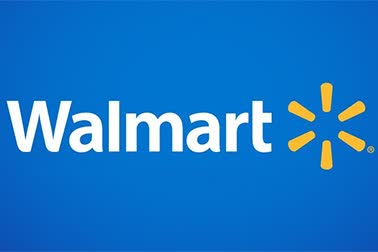Dividend Value Builder Newsletter
- Discover, Compare, and Evaluate Stocks Without Emotional Bias -
(Intrinsic Value Analysis For Over 300 Stocks)
Walmart (WMT) Stock Analysis

Walmart Dividend
Walmart (WMT) has paid a dividend every year since 1974 and increased it for 52 consecutive years; qualifying the company as a Dividend King.
Current Dividend Annualized: $0.94
Why you might want to own the company:
Walmart offers a combination of stability, resilience, and modest dividend growth, making it an appealing core holding for conservative investors. Its consistent performance during economic slowdowns and progress in digital transformation position it well for long-term relevance. For investors seeking steady returns from a dominant retail franchise with strong cash flow generation, WMT can be an attractive option.
Is the stock a Buy, Sell, or Hold?
Walmart (WMT) Intrinsic Value – Margin of Safety Analysis
(updated September 2025)
Normalized Diluted Earnings Per Share (TTM): $2.65
Free Cash Flow Per Share (TTM): $1.71
Cash Flow From Operations (CFO) Per Share (TTM): $4.77
Estimated Intrinsic Value: $64
Target Buy Price Based on Required Margin of Safety = $64
(Required Margin of Safety Based On Risk Stability
Grade:
A = 0%, B = 20%, C = 40%, D = 60%, F = 80%)
Target SELL Price Based on Estimated Intrinsic Value = $89
(Allow Overvaluation Adjusted by Risk Stability Grade:
A = 40%, B = 25%, C = 15%, D = 5%, F = 0%)
Risk / Stability Grade: A
A grade indicates a quality company with a strong balance sheet, high earnings quality, and a positive business environment. These stocks require the slimmest margin of safety within the stock universe.
B grade indicates a company with a good balance sheet, good earning quality, and a stable business environment. The margin of safety required should be greater than stocks with an A grade but less than the average stock.
C grade indicates a company with a sufficient balance sheet, at least average earnings quality, and a reasonably stable business environment. The margin of safety required is greater than A & B stocks, but less than D & F stocks.
D grade indicates a company in good standing but has issues that could affect its stability and long term risks. D rated stocks should require a large margin of safety when purchased.
F grade indicates a company with significant issues that are currently affecting its stability and long term risks. Require an extremely large margin of safety for F rated stocks when purchased.
Financial Risk Grade: A
A grade indicates an extremely low probability of a dividend cut. This rating is reserved for companies with strong balance sheets and/or excellent dividend histories.
B grade indicates a very low probability for a dividend cut.
C grade indicates a low probability for a dividend cut and/or average safety risk.
D grade indicates there are issues that should be considered concerning future dividend payments.
F grade indicates serious dividend safety risks. Investors should complete comprehensive due diligence before investing.
Business Quality Grade: A
A grade indicates earnings quality is high or far above average.
B grade indicates earnings quality is good and/or above average.
C grade indicates earnings quality is acceptable or average.
D grade indicates earnings quality is poor and requires thoughtful due diligence.
F grade indicates the quality of the earnings is poor or far below average requiring serious due diligence.
Earnings Report: 7/31/25
AAAMP Portfolios Position Disclosures:
Treasure Trove Dividend (TTD) – None
Global Dividend Value (GDV) – None
Dividend Growth & Income (DGI) – None
Global Value (GV) – None
Global Value Aggressive (GVA) – None
Global Conservative Income (GCI) – None
Global High Income (GHI) – None
Company Description
Sector: Consumer Defensive
Industry: Discount Stores
Company Overview:
Walmart Inc. (WMT) is the world’s largest retailer, operating a vast network of hypermarkets, discount department stores, and grocery stores across the globe. The company serves millions of customers through its physical stores and growing e-commerce platform. With operations in multiple countries, Walmart provides a wide range of products, including groceries, apparel, electronics, and household essentials, often at low prices due to its economies of scale and efficient supply chain.
Company Strengths:
Walmart’s key strengths include its massive scale, strong brand recognition, and cost leadership strategy, allowing it to offer competitive prices. The company’s extensive logistics and supply chain network help it maintain efficiency and inventory management. Additionally, Walmart has been expanding its digital presence, growing its e-commerce and online grocery services to compete with major online retailers. Its strong financial position and consistent dividend payments make it attractive to investors.
Company Challenges:
Despite its strengths, Walmart faces challenges such as rising labor costs, supply chain disruptions, and inflationary pressures that impact profit margins. Competition from e-commerce giants like Amazon continues to push Walmart to invest heavily in technology and online retail. Additionally, regulatory and political risks, particularly in international markets, can create uncertainties for the company’s global operations. Balancing low prices while maintaining profitability remains an ongoing challenge.
Dividend Value Builder Newsletter Membership (24 Issues) - $129/Yr.
Minimize Large Portfolio Drawdowns
Invest With Confidence In Less Time - Manage Your Portfolio Without Behavioral Errors
Disclaimer:
While Arbor Investment Planner has used reasonable efforts to obtain information from reliable sources, we make no representations or warranties as to the accuracy, reliability, or completeness of third-party information presented herein. The sole purpose of this analysis is information. Nothing presented herein is, or is intended to constitute investment advice. Consult your financial advisor before making investment decisions.
